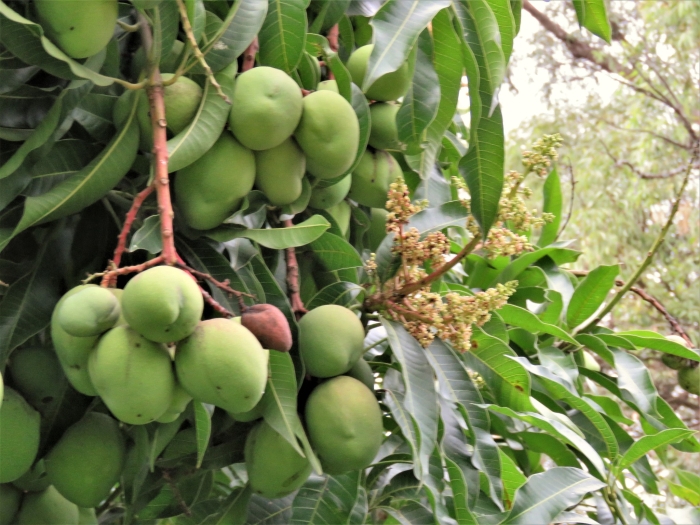Mango
(Mangifera indica)
Mango (Mangifera indica)
/
/

Annika Lindqvist
CC BY 4.0

















































Estimated Native Range
Summary
Mango trees are widely cultivated in tropical and subtropical regions for their fruit, which is eaten fresh or used in a variety of culinary preparations. The trees are also planted for their ornamental value and as shade trees in large landscapes. They require well-drained sandy loam soil with a pH between 5.2 and 7.5 and thrive in full sun with medium water requirements. While mango trees are relatively easy to maintain, they can be susceptible to pests such as fruit flies, mango seed weevils, and diseases like anthracnose and powdery mildew. Gardeners should be aware of these potential issues and manage them through proper cultural practices and, if necessary, the use of pesticides. Mango trees have a long juvenile phase and may take several years to begin fruiting, but grafted cultivars can produce fruit much sooner.CC BY-SA 4.0
Plant Description
- Plant Type: Tree
- Height: 50-100 feet
- Width: 10-20 feet
- Growth Rate: Moderate
- Flower Color: N/A
- Flowering Season: Spring
- Leaf Retention: Evergreen
Growth Requirements
- Sun: Full Sun
- Water: Medium
- Drainage: Fast, Medium
Common Uses
Bee Garden, Bird Garden, Butterfly Garden, Drought Tolerant, Edible*Disclaimer: Easyscape's listed plant edibility is for informational use. Always verify the safety and proper identification of any plant before consumption., Fragrant, Hummingbird Garden
Natural Habitat
Native to tropical rainforests and dry deciduous forests of India and Southeast Asia
Other Names
Common Names: Common Mango , Mangobaum , Mangopalme , Manga , Mangue , Manguier , Mangueira , Amba
Scientific Names: Mangifera indica , Mangifera siamensis , Mangifera integrifolia , Mangifera laxiflora , Mangifera austro-yunnanensis , Mangifera domestica , Mangifera mekongensis , Mangifera amba , Mangifera anisodora , Mangifera austroyunnanensis
GBIF Accepted Name: Mangifera indica L.